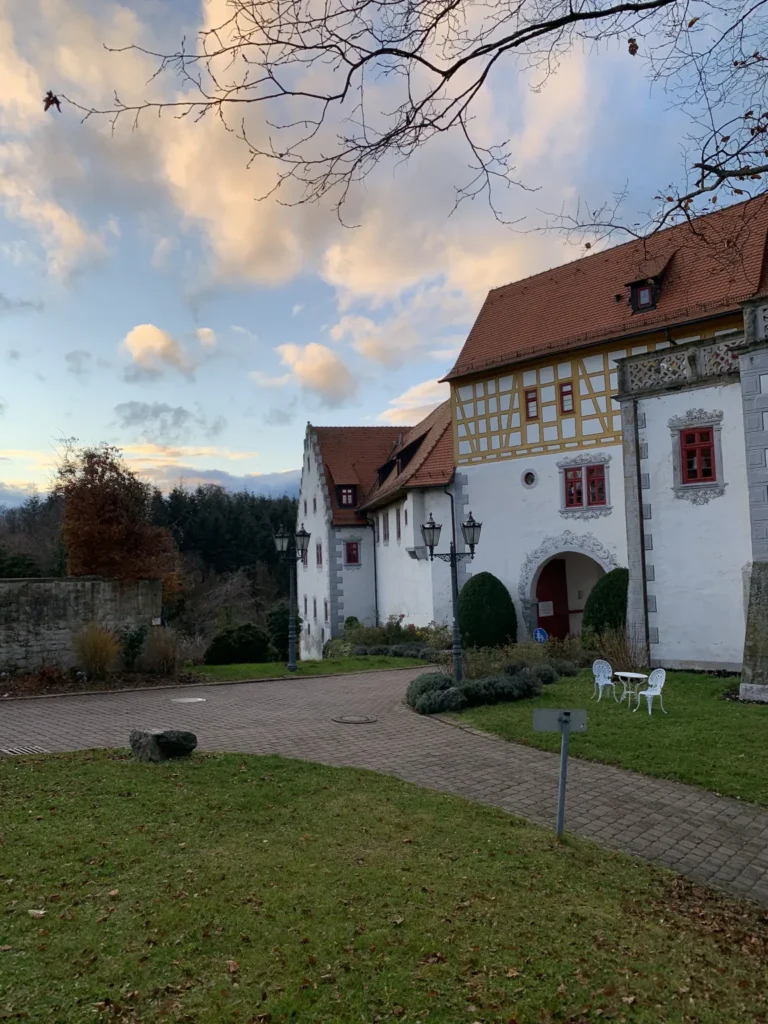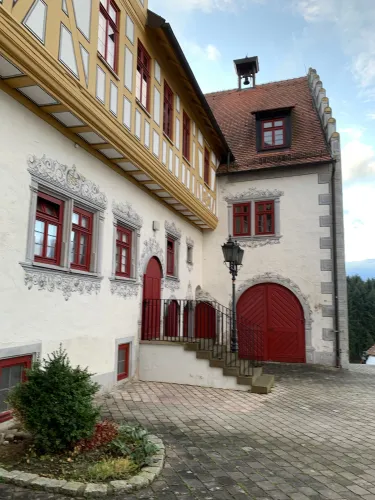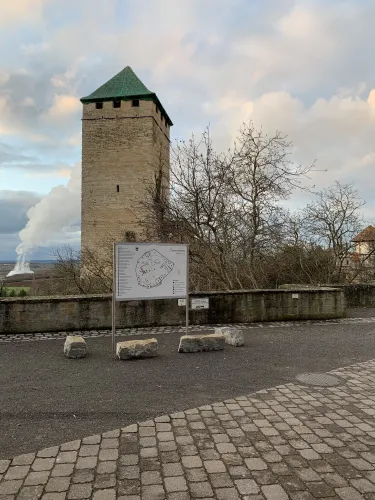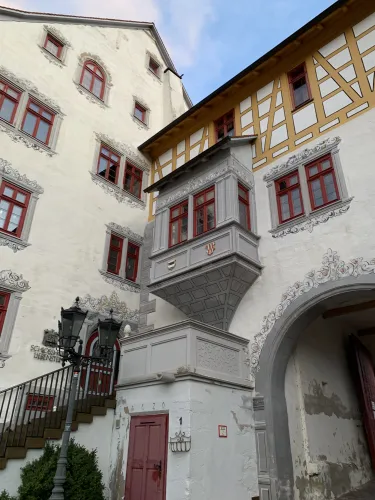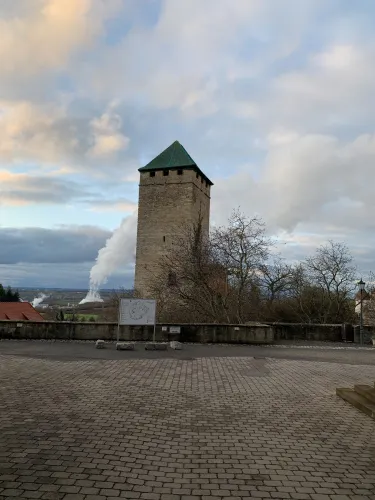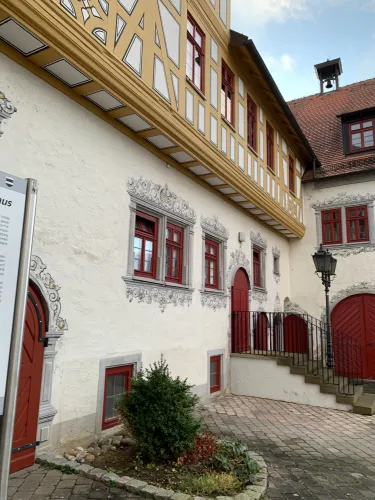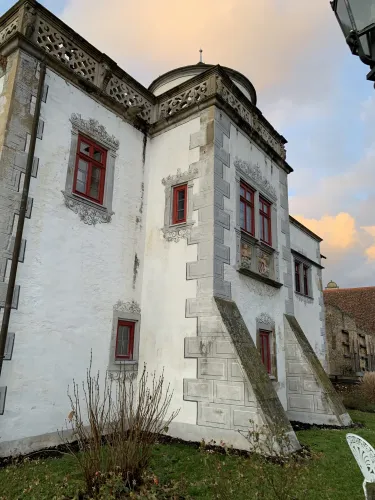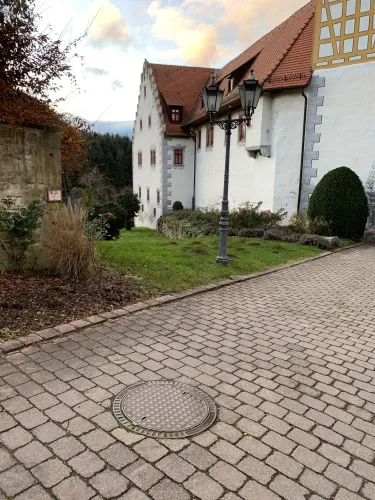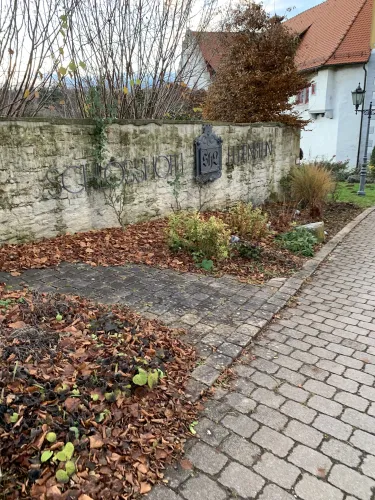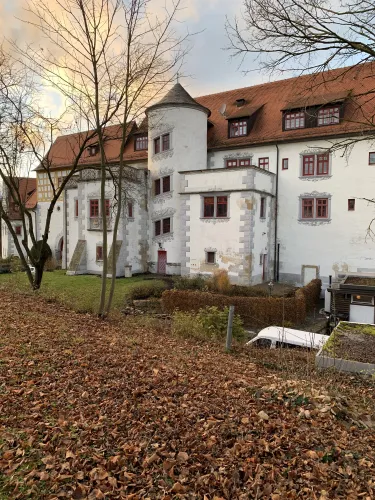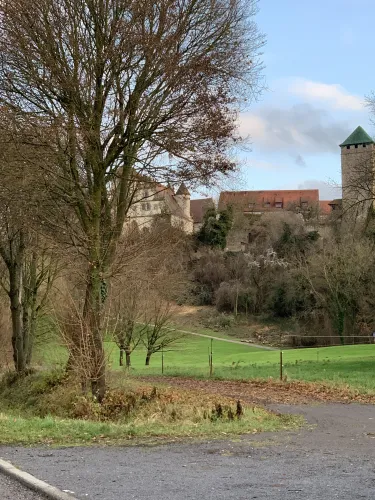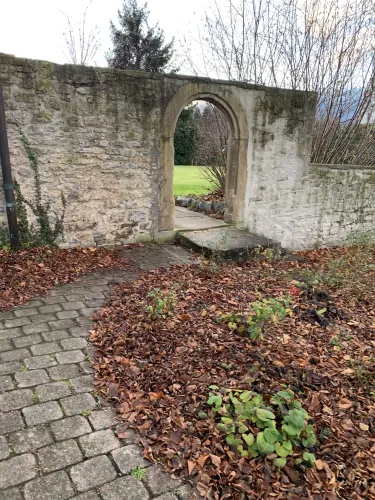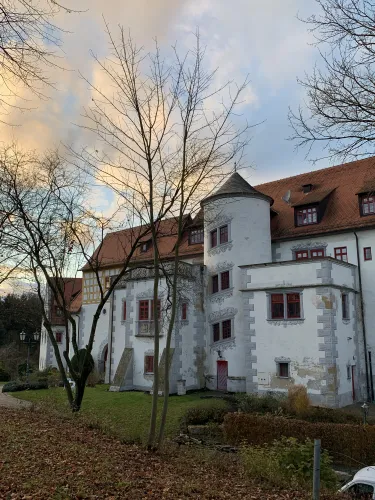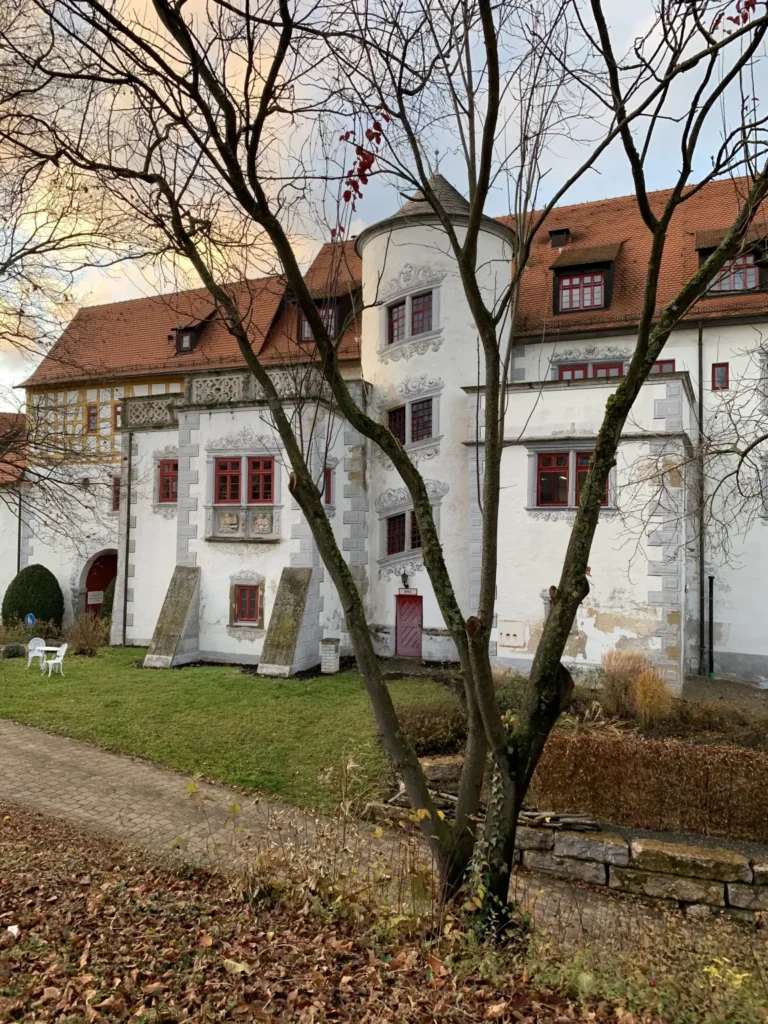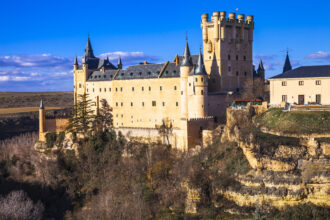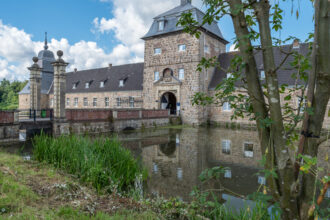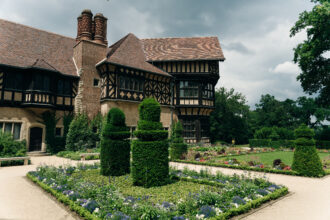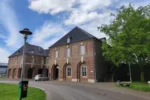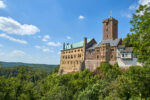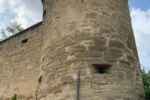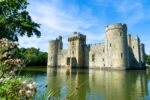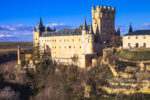The Liebenstein Castle is beautifully perched on a narrow, steeply sloping ridge surrounded by picturesque vineyards south of Neckarwestheim in the district of Heilbronn in Baden-Württemberg. I visited this enchanting castle, which now houses a hotel with a restaurant and golf course, in December. The history of the castle began in 1230. In that year, construction of the exceptionally large castle began under King Henry VII. In 1235, Liebenstein was mentioned for the first time. On January 15, Albert von Liebenstein appeared as a witness in a document issued by King Henry VII. On July 2, 1235, King Henry VII submitted to his father, Emperor Frederick II, and was deposed. Liebenstein Castle was only completed to a small extent. In 1298, Knight Walter von Urbach, known as von Liebenstein, is mentioned. This is considered proof of a second family of owners and the reason for the division of the castle into two parts until the 17th century. In the 14th century, the entire complex passed to the Liebenstein family through intermarriage. From 1467 onwards, Konrad von Liebenstein acquired the estates in Jebenhausen near Göppingen. Hans von Liebenstein and his descendants built up a complex of properties consisting of fiefs belonging to the Electorate of Mainz in Bönnigheim and the surrounding area. From 1504 to 1508, Jakob von Liebenstein was Archbishop of Mainz. The castle owes its present appearance to the reconstruction work carried out between 1525 and 1600. Around 1537, Moritz von Liebenstein had the huge barn of the Upper Castle built. Further renovations included hall-like rooms, the stair tower, the roof terraces, the bay window, and the castle kitchen. Various outbuildings such as the smithy, the sheep house, the tithe house, the old and new bathhouses, and the bakery were built in the Renaissance style. This gave the entire estate a prestigious character. Between 1673 and 1678, both halves of the castle were sold to the Duke of Württemberg. Phillipp Albrecht von Liebenstein moved to Jebenhausen, his brother Phillipp Konrad to Köngen near Esslingen. In 1807, the Württemberg staff office was dissolved and the castle was leased to farmers. In 1884, the forestry office was housed in parts of the castle and was managed by 60 to 80 workers. During World War II, the castle and the tower were hit by grenades. After the war, 46 displaced persons were offered a home in the castle and its outbuildings. Between 1972 and 1976, the dilapidated castle chapel was completely renovated. Between 1982 and 1985, the municipality of Neckarwestheim acquired the castle. At the same time, Schloss Liebenstein GmbH & Co. KG was founded and a golf course and castle hotel were opened. I was impressed by the castle grounds with their various buildings from different eras, such as the late Romanesque, early and high Gothic, Baroque, late Gothic, early and late Renaissance. The castle is truly beautiful and picturesquely nestled among the vineyards. From here, you can take wonderful walks. I entered the castle courtyard through a main gate that was 6.70 meters wide and had a 5-meter-deep gatehouse. Its 1.50-meter-thick walls form the side walls of the passageway. In the course of the major castle renovation from the late 16th century onwards, the medieval gate complex was built over with a gatehouse and extended 1.40 meters to the north. In the bay window on the first floor, I discovered the coat of arms of the gatehouse’s builders: Albrecht von Liebenstein and his wife Margaretha. A small extension below shows the year 1621, which probably marks the completion of the extensive renovation work at Liebenstein. The second floor of the gatehouse consists of unadorned half-timbering, which was only built around 1900. To the west, a two-story building is attached to the gatehouse, which was used as a wash house and bakery. The main building in the courtyard is the castle, which houses the hotel and restaurant. To the right is the tithe barn and to the left is the sheepfold. Both buildings can be used for events. Opposite the castle is the vaulted cellar and the keep. Behind it is the castle chapel, where you can get married like a princess. I was fascinated by the beautiful grounds and the fantastic view of the vineyards. I was particularly impressed by the 1.10-meter-thick surrounding wall. I strolled through the courtyard and ended up at the sun-drenched and well-maintained golf course 200 meters away. The large castle grounds are not only ideal for walking, but also for enjoying the peace and quiet of the countryside and recharging your batteries. I enjoyed the silence away from the hustle and bustle and felt like a little princess strolling through the garden. I had a wonderful time and enjoyed the journey back to a bygone era.
